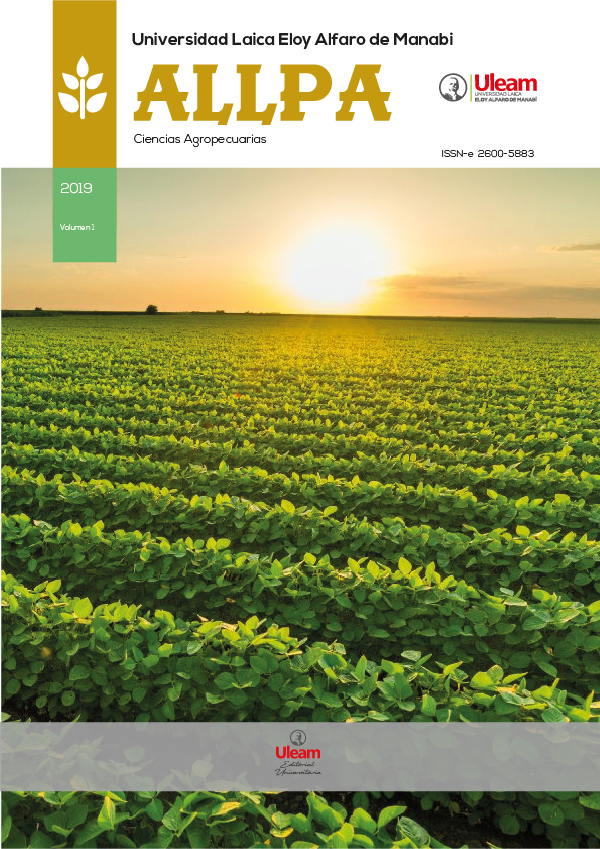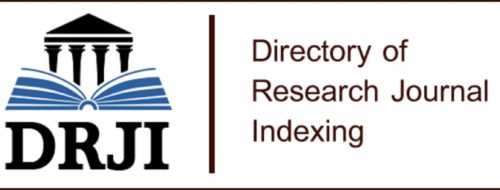Residuos de tetraciclinas, macrólidos y betalactámicos en productos pecuarios destinados a consumo humano: Una revisión bibliográfica
DOI:
https://doi.org/10.56124/allpa.v8i16.0132Palabras clave:
residuos de antibióticos, productos pecuarios, límites máximos residuales, salud pública, resistencia antimicrobianaResumen
La presente revisión bibliográfica analiza la presencia de residuos de antibióticos (principalmente tetraciclinas, macrólidos y betalactámicos) en productos pecuarios destinados al consumo humano y sus implicaciones en la salud pública. El estudio se desarrolló bajo los lineamientos PRISMA, a partir de una búsqueda sistemática en bases de datos científicas internacionales (Scopus, PubMed, ScienceDirect, entre otras) comprendida entre los años 2015 y 2025. De los 520 registros iniciales, se seleccionaron 32 estudios que cumplieron con los criterios de inclusión y calidad metodológica. Los resultados evidencian una alta prevalencia de residuos antimicrobianos en carne, leche y huevos, con concentraciones que en numerosos casos superan los límites máximos residuales (LMR) establecidos por la FAO, OMS y Codex Alimentarius. Dichos hallazgos revelan un uso inadecuado de los antibióticos en la producción animal, la falta de cumplimiento de los períodos de retiro y la debilidad de los sistemas de control sanitario. La presencia de estos residuos representa un riesgo directo para la salud humana por su relación con reacciones alérgicas, alteraciones en el microbiota intestinal y, especialmente, con el desarrollo de resistencia antimicrobiana.
Palabras clave: residuos de antibióticos, productos pecuarios, límites máximos residuales, salud pública, resistencia antimicrobiana.
Abstract
This literature review analyzes the presence of antibiotic residues—primarily tetracyclines, macrolides, and beta-lactams—in livestock products intended for human consumption and their implications for public health. The study was conducted under PRISMA guidelines, based on a systematic search of international scientific databases (Scopus, PubMed, ScienceDirect, among others) between 2015 and 2025. Of the 520 initial records, 32 studies were selected that met the inclusion and methodological quality criteria. The results show a high prevalence of antimicrobial residues in meat, milk, and eggs, with concentrations that in many cases exceed the maximum residual limits (MRLs) established by the FAO, WHO, and Codex Alimentarius. These findings reveal inappropriate use of antibiotics in animal production, lack of compliance with withdrawal periods, and weak sanitary control systems. The presence of these residues represents a direct risk to human health due to their association with allergic reactions, alterations in the intestinal microbiota and, especially, the development of antimicrobial resistance.
Keywords: antibiotic residues, livestock products, maximum residue limits, public health, antimicrobial resistance.
Fecha de recepción: 09 de abril de 2025; Fecha de aceptación: 18 de junio de 2025; Fecha de publicación: 09 de julio del 2025.
Descargas
Citas
Agrocalidad (2025). Resolución 0314. Límite máximo para residuos de medicamentos veterinarios. https://www.agrocalidad.gob.ec/wp/content/uploads/2025/03/RESOLUCION_0314.pdf
Al Kindi, S., Ahuja, A., Al Hilali, M., Al Maimani, R. (2024). Screening of veterinary drug residues in marketed milk and eggs in Oman. International Journal of Nutrition, Pharmacology, Neurological Diseases 14(3), 373-378. doi: 10.4103/ijnpnd.ijnpnd_79_24
Albanna, A., Fadhel, M. N., & Al Shaker, Y. M. (2020). Detection Beta-lactam residues in imported and local dairy products in Mosul city. In IOP Conference Series: Earth and Environmental Science, 553, 012014. IOP Publishing. Doi: 10.1088/1755-1315/553/1/012014
Angeles C., Contreras, D., Espinosa, A., Robles, L., Ghavipanje, N., & Gonzalez‐Ronquillo, M. (2025). Multivariate Approach to Antimicrobial Residue Concentrations in Animal‐Derived Products: An Analytical Review. Veterinary Medicine and Science, 11(2), e70297. https://doi.org/10.1002/vms3.70297
Arsène, M. M. J., Davares, A. K. L., Viktorovna, P. I., Andreevna, S. L., Sarra, S., Khelifi, I., & Sergueïevna, D. M. (2022). The public health issue of antibiotic residues in food and feed: Causes, consequences, and potential solutions. Veterinary world, 15(3), 662. doi: 10.14202/vetworld.2022.662-671
Bacanli, M., & Başaran, N. (2019). Importance of antibiotic residues in animal food. Food and Chemical Toxicology, 125, 462-466. https://doi.org/10.1016/j.fct.2019.01.033
Batah, R., Belbel, Z., Melouah, K., Labied, I., Benaldjia, L., & Berreghis, A. (2025). Detection of antibiotic residues in cow’s milk using microbiological screening test in Souk Ahras, Algeria. Journal of the Hellenic Veterinary Medical Society, 76(1), 8865-8870. https://doi.org/10.12681/jhvms.38195
Chen, R. A., Wu, W. K., Panyod, S., Liu, P. Y., Chuang, H. L., Chen, Y. H., & Sheen, L. Y. (2022). Dietary exposure to antibiotic residues facilitates metabolic disorder by altering the gut microbiota and bile acid composition. Msystems, 7(3), e00172-22. doi: 10.1128/msystems.00172-22
Chiesa, L. M., DeCastelli, L., Nobile, M., Martucci, F., Mosconi, G., Fontana, M., & Panseri, S. (2020). Analysis of antibiotic residues in raw bovine milk and their impact toward food safety and on milk starter cultures in cheese-making process. LWT 131: 109783. Publisher Full Text. https://doi.org/10.1016/j.lwt.2020.109783
Getahun, M., Abebe, R. B., Sendekie, A. K., Woldeyohanis, A. E., & Kasahun, A. E. (2023). Evaluation of antibiotics residues in milk and meat using different analytical methods. International journal of analytical chemistry, (1), 4380261. https://doi.org/10.1155/2023/4380261
Ghali Mohammed, I., Ghali, S. Omotayo, Ayoade Odetokun, I., Adeyemo, I. Adewuyi & Olufemi Olatoye, I. (2025). Oxytetracycline Residues in Eggs From Commercial Poultry Farms in Ilorin City, Nigeria. Iranian Journal of Veterinary Medicine, 19(2), 299-306. doi: 10.32598/ijvm.19.2.1005536
Izah, S. C., Nurmahanova, A., Ogwu, M. C., Toktarbay, Z., Umirbayeva, Z., Ussen, K., & Guo, Z. (2025). Public health risks associated with antibiotic residues in poultry food products. Journal of Agriculture and Food Research, 21, 101815. https://doi.org/10.1016/j.jafr.2025.101815
Jammoul, A., & El Darra, N. (2019). Evaluation of Antibiotics Residues in Chicken Meat Samples in Lebanon. Antibiotics, 8(2), 69. https://doi.org/10.3390/antibiotics8020069
Lekagul, A., Tangcharoensathien, V., Mills, A., Rushton, J., & Yeung, S. (2020). How antibiotics are used in pig farming: a mixed-methods study of pig farmers, feed mills and veterinarians in Thailand. BMJ Global Health, 5(2), e001918. https://doi.org/10.1093/jac/dkg483
Manyi-Loh, C., Mamphweli, S., Meyer, E., & Okoh, A. (2018). Antibiotic use in agriculture and its consequential resistance in environmental sources: potential public health implications. Molecules, 23(4), 795. doi: 10.3390/molecules23040795
Mercosur (2023). Criterios para la adopción de límites máximos de residuos de principios activos de medicamentos veterinarios en alimentos de origen animal. https://normas.mercosur.int/public/normativas/4675
Ngangom, B. L., Tamunjoh, S. S. A., & Boyom, F. F. (2019). Antibiotic residues in food animals: Public health concern. Acta Ecologica Sinica, 39(5), 411-415. https://doi.org/10.1016/j.chnaes.2018.10.004
Oladeji, O. M., Mugivhisa, L. L., & Olowoyo, J. O. (2025). Antibiotic residues in animal products from some African countries and their possible impact on human health. Antibiotics, 14(1), 90. https://doi.org/10.3390/antibiotics14010090
Organización de las Naciones Unidas para la Alimentación y la Agricultura [FAO] (2024) Límites máximos de residuos (LMR) | CODEXALIMENTARIUS FAO-WHO. https://www.fao.org/fao-who-codexalimentarius/codex-texts/maximum-residue-limits/es/
Organización Mundial de la Salud [OMS] (2023) Resistencia a los antimicrobianos. https://www.who.int/news-room/fact-sheets/detail/antimicrobial-resistance
Organización Mundial de la Salud Animal [OMSA] (2021) Instrumentos internacionales relativos al uso de antimicrobianos en el sector de la salud humana y los sectores animal y vegetal. https://iris.who.int/server/api/core/bitstreams/7daf36f8-c70a-42b5-8786 e8816d90fd5f/content
Organización Panamericana de la Salud [OPS] (2023). Resistencia antimicrobiana: una amenaza real. https://www.paho.org/es/noticias/21-11-2023-resistencia-antimicrobiana-amenaza-real.
Page, M. J., McKenzie, J. E., Bossuyt, P. M., Boutron, I., Hoffmann, T. C., Mulrow, C. D., & Moher, D. (2021). The PRISMA 2020 statement: an updated guideline for reporting systematic reviews. bmj, 372.
Phillips, I., Casewell, M., Cox, T., De Groot, B., Friis, C., Jones, R., & Waddell, J. (2004). Does the use of antibiotics in food animals pose a risk to human health? A critical review of published data. Journal of antimicrobial Chemotherapy, 53(1), 28-52. https://doi.org/10.1136/bmjgh-2019-001918
Qamar, M. U., Aatika, Chughtai, M. I., Ejaz, H., Mazhari, B. B. Z., Maqbool, U., ... & Junaid, K. (2023). Antibiotic-resistant bacteria, antimicrobial resistance genes, and antibiotic residue in food from animal sources: one health food safety concern. Microorganisms, 11(1), 161. doi: 10.3390/microorganisms11010161
Sachi, S., Ferdous, J., Sikder, M. H., & Hussani, S. A. K. (2019). Antibiotic residues in milk: Past, present, and future. Journal of advanced veterinary and animal research, 6(3), 315. https://doi.org/10.5455%2Fjavar.2019.f350
Sans, P., Sans, P., y Combris, P. (2015). Patrones de consumo mundial de carne: una visión general de los últimos cincuenta años (1961-2011). Meat science, 109, 106-11. https://doi.org/10.1016/j.meatsci.2015.05.012 .
Sarango Berru, A. S. (2024). Resistencia a los antimicrobianos por enterobacterias a nivel de América Latina y el Caribe 2013-2023. https://dspace.ucacue.edu.ec/handle/ucacue/16743
Sarmah, A. K., Meyer, M. T., & Boxall, A. B. (2006). A global perspective on the use, sales, exposure pathways, occurrence, fate and effects of veterinary antibiotics (VAs) in the environment. Chemosphere, 65(5), 725-759. https://doi.org/10.1016/j.chemosphere.2006.03.026
Ulomi, W. J., Mgaya, F. X., Kimera, Z., & Matee, M. I. (2022). Determination of Sulphonamides and Tetracycline Residues in Liver Tissues of Broiler Chicken Sold in Kinondoni and Ilala Municipalities, Dar es Salaam, Tanzania. Antibiotics, 11(9), 1222. https://doi.org/10.3390/antibiotics11091222
Vishnuraj, M. R., Kandeepan, G., Rao, K. H., Chand, S., & Kumbhar, V. (2016). Occurrence, public health hazards and detection methods of antibiotic residues in foods of animal origin: A comprehensive review. Cogent Food & Agriculture, 2(1), 1235458. https://doi.org/10.1080/23311932.2016.1235458
Zeuko E. (2023). Antibiotic residues in food. In Antibiotics-Therapeutic Spectrum and Limitations (pp. 645-675). Academic Press. https://doi.org/10.1016/B978-0-323-95388-7.00021-8
Publicado
Cómo citar
Número
Sección
Licencia
Derechos de autor 2025 Revista de Ciencias Agropecuarias ALLPA. ISSN: 2600-5883.

Esta obra está bajo una licencia internacional Creative Commons Atribución-NoComercial-CompartirIgual 4.0.


.jpg)










